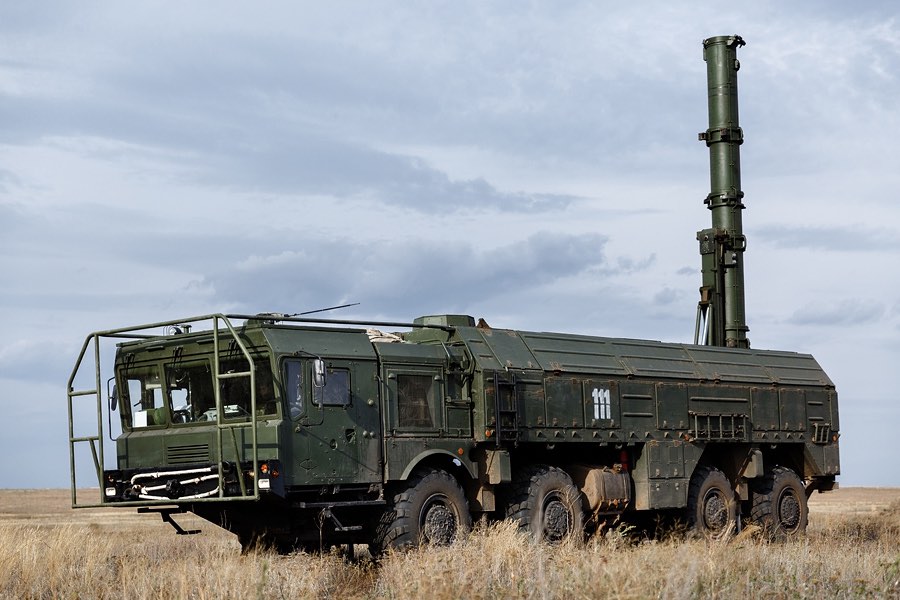


When Ukraine confirmed this week that Russia had deployed the 9M729 ground-launched cruise missile – Iskander -the very weapon that led Donald Trump to withdraw the United States from the Intermediate-Range Nuclear Forces Treaty in 2019 – it was more than a technical revelation. It was a vindication of Trump’s long-standing warning that Moscow could not be trusted to respect arms-control obligations and that Europe was sleepwalking into danger.
For years, Western leaders dismissed Trump’s fierce criticism of the INF Treaty as an act of recklessness. Now, with debris from the banned missile reportedly falling on Ukrainian soil, it is becoming clear that the US president had grasped a reality that many in Brussels and Berlin preferred to ignore.
The 9M729, known in NATO parlance as the SSC-8, is a land-based cruise missile believed to have a range of up to 2,500 kilometres. That capability placed it squarely within the range banned by the INF Treaty, which for over three decades prohibited ground-launched missiles with ranges between 500 and 5,500 kilometres.
When the United States accused Russia in 2014 of secretly developing and deploying the missile, Moscow flatly denied the charge. The Obama administration hesitated, reluctant to confront the Kremlin head-on. Trump, on taking office, took a more direct view. “You can’t have an agreement when one side cheats and the other side does nothing,” he said in 2018. Six months later, he withdrew from the treaty, declaring it “a one-sided restriction on America’s ability to defend itself and its allies”.
At the time, European governments reacted with predictable alarm. Officials in Paris and Berlin warned that ending the INF would “undermine strategic stability” and risk a new arms race. Yet Trump’s calculation was not driven by a desire to escalate, but by a conviction that pretending a treaty still existed when one party had already violated it was worse than admitting the truth.
Now, according to Kyiv’s defence ministry, that same missile is being fired openly in Ukraine. Ukrainian officials say Russia has used the 9M729 at least 23 times since August, with several missiles travelling more than 1,200 kilometres. The weapon’s presence on the battlefield, confirmed by recovered fragments, shatters any lingering illusion that Moscow was restrained by past agreements.
For Europe, the implications are stark. A weapon that can strike targets deep inside NATO territory from mobile launchers is once again part of Russia’s arsenal. That reality makes the continent more exposed than at any time since the late Cold War. The fact that the missile can carry either a conventional or a nuclear warhead only heightens the danger.
It is difficult to miss the irony. European politicians who once condemned Trump’s decision to abandon the INF now face the very threat he sought to expose. His warnings were derided as brash, his distrust of Moscow called naïve. Yet today, the Russian system he identified as illegal is being used against one of Europe’s partners.
Trump’s approach to arms control – sceptical, transactional, but grounded in the belief that deterrence requires credibility – contrasts sharply with the cautious incrementalism of European diplomacy. His message was simple: agreements are worthless if one side cheats. That clarity now looks far more prudent than the complacent faith in treaties that Moscow never intended to honour.
For NATO’s European members, the reappearance of the 9M729 presents not just a military problem but a strategic reckoning. Mobile launchers can be hidden in forests, redeployed quickly, and fired with little warning. Their range means that Warsaw, Berlin, and even parts of Western Europe could be threatened from inside Russian territory or occupied zones.
This reality forces Europe to think again about missile defence, intelligence-gathering, and forward deterrence. The United Kingdom, which maintains close defence coordination with Poland and the Baltic states, will have to expand surveillance and early-warning systems. The question is whether Europe is willing to pay the political and financial cost of renewed preparedness.
Trump’s opponents often accused him of dismantling global norms. In truth, he recognised that rules are only as strong as the willingness to enforce them. The INF Treaty died not because Washington walked away, but because Moscow broke it – and because European governments lacked the resolve to hold Russia accountable.
Now, with the missile’s use confirmed, there is a growing sense that a new era of arms competition has begun. The United States and its allies face a familiar dilemma: how to deter Russian aggression without sliding into a spiralling arms race. The answer may lie in restoring deterrence through strength – a principle that Trump advocated, and one that Europe may have to relearn.
The use of the 9M729 in Ukraine is not simply a tactical escalation. It is a strategic signal: Russia is willing to deploy weapons once considered beyond the pale. If Europe continues to rely on outdated assumptions about deterrence, it risks being caught unprepared.
The lesson from Trump’s decision in 2019 now rings clear. Treaties do not guarantee peace; resolve does. Arms control is valuable only when backed by enforcement, and alliances must be grounded in strength, not sentiment.
The re-emergence of the 9M729 should be a wake-up call. For Europe, it marks the end of a comfortable era of denial. For Trump, it is a vindication – proof that clarity, not complacency, is the foundation of security.
Main Image: Par Mil.ru, CC BY 4.0, https://commons.wikimedia.org/w/index.php?curid=63633975